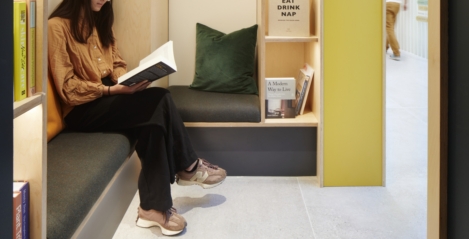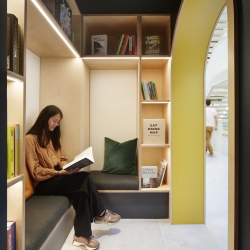November 7, 2023
Angry, stressed and worried. The utter state of the UK workforce in 2023
![Gallup has published its 2023 Gallup Global Emotions report [registration] – a study of employee sentiment in the UK workforce](https://workplaceinsight.net/wp-content/uploads/2023/11/frustration-7505960_1280-250x250.png) Gallup has published its 2023 Gallup Global Emotions report [registration] – a study of employee sentiment in the UK workforce. According to the report’s Negative Experience Index, which tracks how many people experience daily sadness, anger, stress, worry, and physical pain, full-time UK employees are experiencing historically high levels of daily negative experiences. This latest Gallup data claims that full-time UK employees scored a 32 on Gallup’s Negative Experience Index. This is up substantially from 23 in 2020. Full-time employees in the UK are now some of the most emotionally distressed in Europe, second only to employees in Malta. (more…)
Gallup has published its 2023 Gallup Global Emotions report [registration] – a study of employee sentiment in the UK workforce. According to the report’s Negative Experience Index, which tracks how many people experience daily sadness, anger, stress, worry, and physical pain, full-time UK employees are experiencing historically high levels of daily negative experiences. This latest Gallup data claims that full-time UK employees scored a 32 on Gallup’s Negative Experience Index. This is up substantially from 23 in 2020. Full-time employees in the UK are now some of the most emotionally distressed in Europe, second only to employees in Malta. (more…)















 Vulnerable narcissistic leaders are especially likely to make employees irritated during crisis situations, reveals new research from NEOMA Business School. Birgit Schyns, Distinguished Professor of People & Organisations at NEOMA, and co-authors analysed survey data on workers in the UK education sector during the COVID-19 pandemic. Respondents reported their levels of irritation and Coronavirus-related worry in five weekly surveys, as well as their experiences with vulnerable narcissistic leadership – an unstable form of leadership characterised by covert feelings of entitlement.
Vulnerable narcissistic leaders are especially likely to make employees irritated during crisis situations, reveals new research from NEOMA Business School. Birgit Schyns, Distinguished Professor of People & Organisations at NEOMA, and co-authors analysed survey data on workers in the UK education sector during the COVID-19 pandemic. Respondents reported their levels of irritation and Coronavirus-related worry in five weekly surveys, as well as their experiences with vulnerable narcissistic leadership – an unstable form of leadership characterised by covert feelings of entitlement. 















May 24, 2023
Hybrid working, work from anywhere and the evolution of the Third Place
by Chelsea Perino • Comment, Property, Workplace design